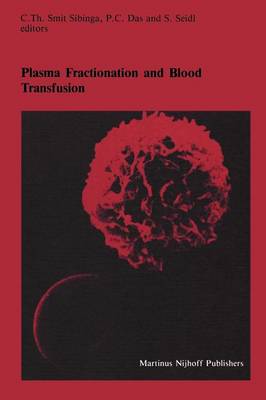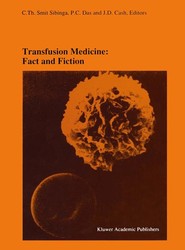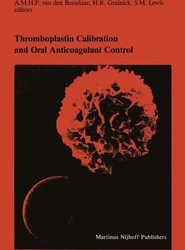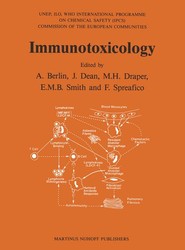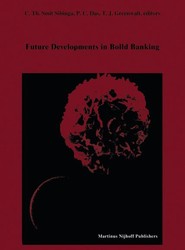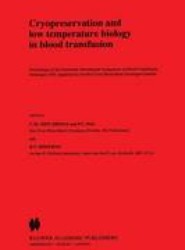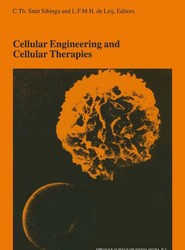(To see other currencies, click on price)
MORE ABOUT THIS BOOK
Main description:
Plasma fractionation and blood transfusion are inherently linked. Blood bankers need to have a sincere interest in fractionation and purification techniques in order to understand the need for carefully controlled source material collection and initial processing. Developments point to a shift in technology, implementation and application of plasma fractions to be produced, such that early anticipation from both bloodbankers and fractionators in a joint interest and effort are needed. As usual there is good news and bad news. We are referring in that respect to the exciting presentation about the future of bloodbanking. Although the blood donor still plays a major role in bloodbanking, new technologies could terminate the conventional blood transfusion service in the next 20-40 years. Sooner or later DNA technology will play an important role in bloodbanking and bloodbankers will have to deal with cultivated red cells as a replacement of our donor blood. Several fractionation techniques like column chromatography, controlled pore glass chromatography, heparin double cold precipitation technology and polyelectrolite fractionation are available, which may result in better yields for some of the plasma proteins. These techniques are likely to replace in part the old Cohn fractionation in the near future.
Contents:
I. Source material.- The future blood supply system in the USA: A prognosis.- Plasma supply. National and international logistics, whole blood versus plasmapheresis.- Processing criteria for recovery of FFP for fractionation.- Donation procedure: Collection lesion, fibrinopeptide A, and factor VIII.- Discussion.- II. Technology of plasma fractionation.- Small pool versus large pool in plasma fractionation: Reevaluation of a concept.- Ethanol fractionation of human plasma: An overview.- Control of large-scale plasma thawing.- Contributions to the optimization of factor VIII production: Cryoprecipitation and controlled pore glass adsorption.- Chromatographic methods of plasma fractionation.- Polyelectrolyte fractionation technology.- Recombinant DNA technology for the production of plasma proteins.- Column ion exchange chromatographic production of albumin, IV ISG and factor IX from 75,000 to 100,000 litres of plasma per year.- Large scale chromatographic experiments for plasma fractionation.- Discussion.- III. Safety aspects.- Preservation of structure and function during isolation of human plasma proteins.- The impact of donor selection of virus transmission.- Prevention of transmission of virus infections by blood transfusions and removal of virus infectivity from clotting factor concentrates.- Inactivation of hepatitis viruses (B, non-A/non-B) and retroviruses in pooled human plasma by means of ?-propiolactone-and UV-treatment.- HTLV-I/II and HTLV-III seroprevalence in blood product recipients.- Sero-epidemiology of the human T-lymphotropic retroviruses HTVL-I and HTLV-III in the Netherlands.- Discussion.- IV. Clinical aspects.- Needs, quality versus quantity.- Clinical characteristics of the factor VIII protein from various factor VIII concentrates.- Clinical use of polyelectrolyte-fractionated porcine factor VIII.- Factor VIII:C assay standardisation.- The current of status of fibronectin in clinical medical practice.- Intravenous use of gammaglobulin in 1984.- Discussion.
PRODUCT DETAILS
Publisher: Springer (Springer-Verlag New York Inc.)
Publication date: October, 2011
Pages: 250
Weight: 403g
Availability: Available
Subcategories: Haematology
From the same series

